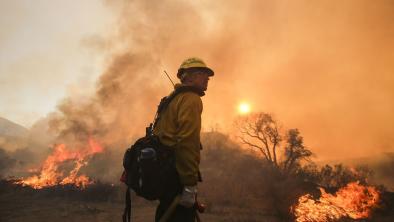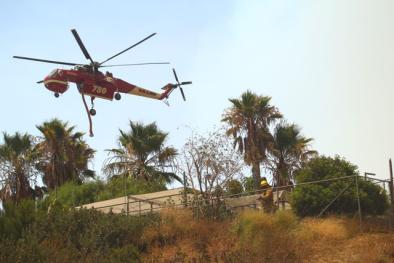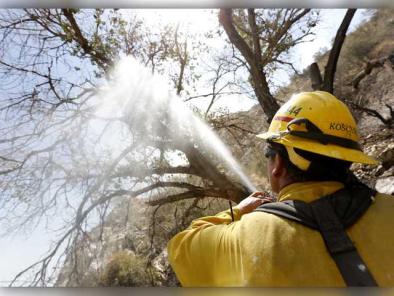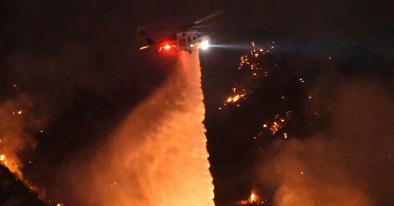Cities In Southern California Can’t Escape The Fire At Their Door
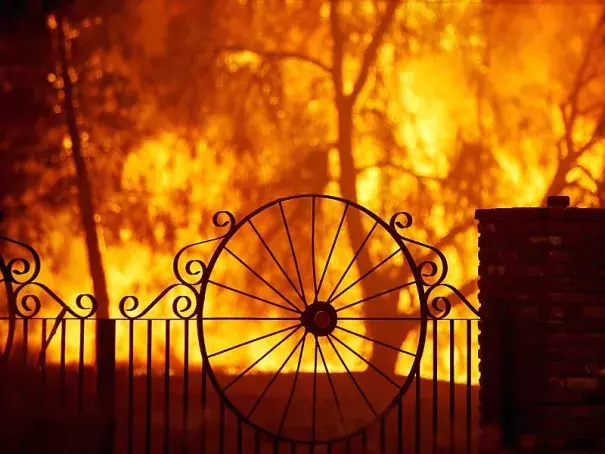
What distinguishes the Sand fire isn’t its size — there are at least 500-odd fires that have been larger in the last 15 years — but its size given its location. The fire has burned at least 59 square miles, and breached the city limits of Santa Clarita, a city with nearly 180,000 people. In Southern California, this type of urban-adjacent wildfire is all too common.
The Sand fire is one of the largest fires in such close proximity to a city in the past 15 years. To see where it ranked, I looked at U.S. Geological Survey data on the locations of fires for the last 15 years and the locations of those fires relative to cities, adding a two-mile radius to city boundaries to roughly account for the WUI area beyond official city borders. With all that data gathered, I looked for the largest fires that have come within at least two miles of a city with a population of at least 50,000, and got this list.

The Sand fire, had it occurred before 2016, would rank 17th on this list. You’ll notice that there are a whole lot of California fires on that table; and it’s even more drastic when you map 15 years’ worth of fires in the area. As you can see in this map, the cities of Southern California are nearly surrounded by previous fires:

To find the culprit for California’s fires, says Forest Service Chief Tom Tidwell, who began his career fighting wildfires in Idaho, look no farther than the historic drought impacting the state: “If you look at the map of where drought is most intense,” he says, “it often overlaps with where you have these catastrophic fires.”
When I looked to see which cities in the country had the most fires, 11 of the top 16 were in Southern California, including Santa Clarita, which was third on the list.

The fire danger for those who choose to live in the WUI is only increasing. According to Tidwell, climate change has resulted in a fire season today that is 78 days longer than it was in 1970 and fires that burn hotter and faster. “It used to be unusual for a fire to burn 10,000 acres in a day, now it’s almost becoming the norm,” he told me. The Sand fire, which burned more than 10,000 acres on Sunday, is currently 85 percent contained and no longer extending its perimeters. However, it is only one of 18 large uncontained fires currently burning across the American West. While the 2016 fire season is not yet over, 2015 set the record for most U.S. acres burned in a year at 10 million acres. As people build more in the WUI — up to 44 million homes in 2010 by one Forest Service count — these changing dynamics of fire put them at risk. “Today, almost any large fire will directly threaten or have the potential to threaten homes in the WUI,” Tidwell said
Related Content
